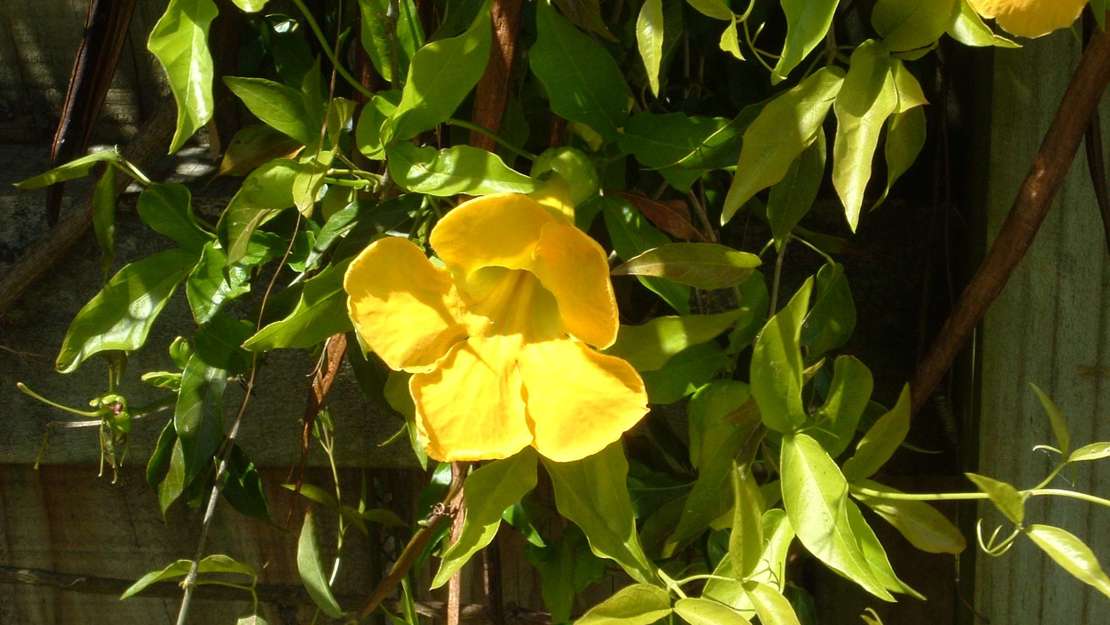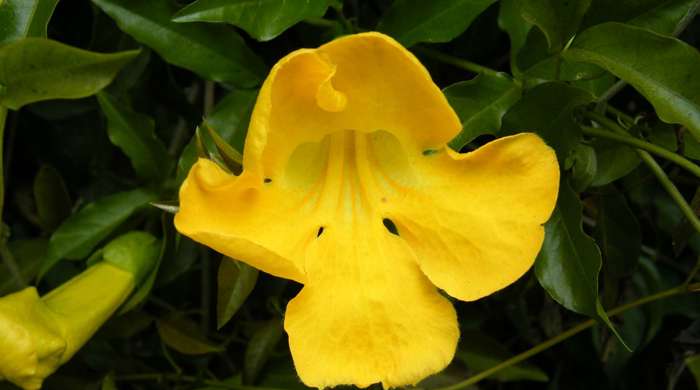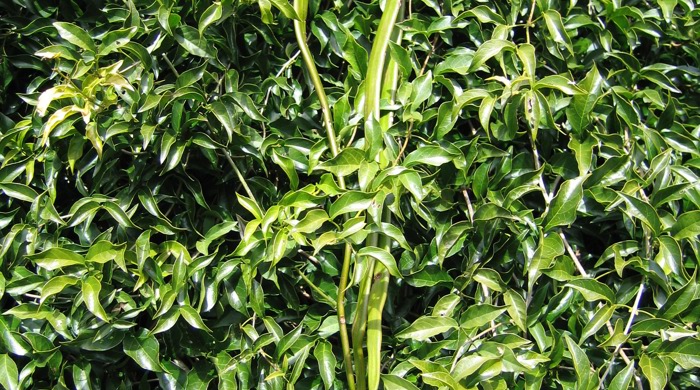Macfadyena unguis-cati
Cat's claw creeper
Family: Bignoniaceae
Origin: Central and South America

Regional Pest Management Plan (RPMP) status
- National Pest Plant Accord Species
- Whole region — Sustained control
General description
Vigorous perennial climbing vine. Stems are branched, angled, < 10 m long, < 2 cm in diameter and woody at the base, with hook-like branch tips. Leaves are complete, oval and < 12 x 5 cm.
Flowers are large, fragrant, bell-shaped, green turning to purple, and borne in December – May. Fruit is hard, oval and green, and contained winged seeds.
What you need to know
To help protect our environment:
- You must not breed, distribute, release or sell cat's claw creeper. As cat’s claw creeper is a National Pest Plant Accord species, these restrictions apply within the Auckland region and across the whole of New Zealand.
- You must not plant cat's claw creeper within the Auckland region, unless you are transferring an existing plant on your land to another location within the boundaries of the same property.
- You must destroy any cat's claw creeper on land that you occupy if it has been planted in breach of the above rules and you are directed to do so by an authorised person.
Habitats
Scrub, forest, riparian habitats, roadsides, shelterbelts, hedgerows, orchards, disturbed areas, coastal cliffs.
Dispersal
Seeds dispersed by wind, water and soil movement. Vegetative spread from stem fragments. Human-mediated dispersal through dumping of garden waste.
Impact on environment
Smothers trees and causes canopy collapse, or forms a dense groundcover mat suppressing native vegetation regeneration.
Control
Site Management
Cut and pull vines away from desirable trees and native plants before foliar spraying. Follow up treated areas 3 times per year. Encourage natural regeneration of native plants or replant treated areas where possible after 2-3 treatments to establish dense ground cover and minimise reinvasion.
Recommended approaches
Physical control
Method: Dig out.
Plant parts requiring disposal: All parts (except vines if left to die in trees).
Disposal options: Remove to greenwaste or landfill if practical.
Biocontrol
Biocontrol is currently not available for this species.
Community agrichemical control recommendations
No qualifications:
For small infestations: Cut stump and paste freshly cut base of stems with glyphosate gel. Cut stump and spray freshly cut base with 100ml glyphosate green per 1L of water.
Basic Growsafe certified:
For medium infestations: Cut vines at waist height and foliar spray vines on the ground with 100ml glyphosate green per 10L of water.
Certified Handler/Experienced agrichemical user:
For large infestations: Foliar spray with 100ml glyphosate green per 10L of water and 20ml penetrant.
Caution: When using any herbicide or pesticide please read the label thoroughly to ensure that all instructions and safety requirements are followed.





